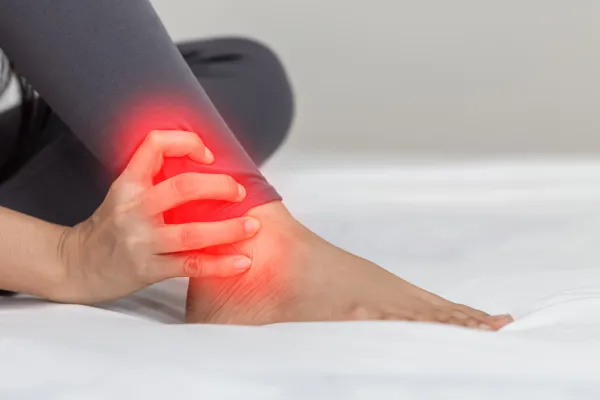Orthopedic Coding Alert
Look for Injection, E/M Changes Next Year
CPT® announced its official list of codes for 2020, and the results aren’t exactly earth-shattering as far as orthopedics goes. “Not an exciting year for orthopedics,” says Heidi Stout, BA, CPC, COSC, PCS, CCS-P, with Coder on Call, Inc., in Milltown, New Jersey. There are, however, a few changes that could affect some orthopedic practices. Also, there are some changes to evaluation and management (E/M) coding that will affect medical coders no matter what specialty they work in. Check out these CPT® 2020 changes, and be sure to apply the new, revised and deleted codes on January 1, 2020 to stay compliant. ‘Needle’ Codes Get Small Dose of Changes There will be four new “needle” codes in CPT® 2020 that might be used by some orthopedic coders, Stout says. The first two codes are: Prior to 2020, you would have used 20999 (Unlisted procedure, musculoskeletal system, general) to report these shots. CPT® 2020 will allow you to much more accurately represent these shots with the aforementioned pair of codes. The other two new codes are: Prior to 2020, you would have used 64450 (Injection, anesthetic agent; other peripheral nerve or branch) to report these injections. Prep for Online E/M Changes Asynchronous online evaluation and management (E/M) services are also among the revisions to the 2020 CPT® code set, so it would behoove all coders to get a leg up on these rapidly evolving areas of patient care. A number of these changes will involve the way you and your provider report service times. So, we’ve broken down the changes and added some expert commentary to help you revamp your templates or other time-related reporting procedures before the changes take effect on January 1. 99444 Is No More … The latest round of CPT® revisions has eliminated many of the restrictions to virtual E/M services by deleting the existing code and replacing it with a new code and two time-based add-ons. The deleted code is 99444 (Online evaluation and management service provided by a physician or other qualified health care professional who may report evaluation and management services provided to an established patient or guardian, not originating from a related E/M service provided within the previous 7 days, using the Internet or similar electronic communications network). As its descriptor states, the service as it currently stands must be: Coding caution: These same restrictions remain for the new code, 99421 (Online digital evaluation and management service, for an established patient, for up to 7 days, cumulative time during the 7 days; 5-10 minutes). Most importantly, any online digital E/M service that is the result of a previous, or that results in a subsequent, E/M visit, is not separately reported, and the online digital E/M service is incorporated into the related E/M visit. In addition, CPT® has placed a seven-day cumulative time limitation on 99421 and made the code time-dependent. You will be able to use 99421 if your provider spends between five and 10 minutes on the asynchronous communication with the patient in that time; you will also be able to report longer time increments with 99422 (… 11-20 minutes) or 99423 (… 21 or more minutes). The deletion of 99444, and its replacement with 99421-99423, presents a teachable moment for coders and their providers. “Coders will need to work with their providers to ensure that they are documenting the time factors of the new codes,” advises Chelle Johnson, CPMA, CPC, CPCO, CPPM, CEMC, AAPC Fellow, billing/credentialing/auditing/coding coordinator at County of Stanislaus Health Services Agency in Modesto, California. “The time component was not required for 99444, so this will be an opportunity for education,” Johnson adds. The good news about the change is that “it compensates the provider for any significant additional time in a seven-day period,” says Mary I. Falbo, MBA, CPC, CEO of Millennium Healthcare Consulting Inc. in Lansdale, Pennsylvania. However, “practices should review their local Medicare Fiscal Intermediaries’ and Medicare Administrative Contractors’ [FIs’/MACs’] policies on these non-face-to-face services,” Falbo cautions.
Related Articles
Orthopedic Coding Alert
- CPT® 2020:
Look for Injection, E/M Changes Next Year
CPT® announced its official list of codes for 2020, and the results aren’t exactly earth-shattering [...] - Fracture Care:
Check for Possible Additional Services With This FAQ
Secondary injury, fracture, wound care all possible in fracture encounters. It’s safe to say that [...] - Modifier Madness:
Keep 78/79 in Separate Buckets With This Advice
Unplanned postop procedures separated by OR question. When the surgeon needs to perform an unplanned [...] - You Be the Coder:
Diagnosing Knee Injuries
Question: A new patient reports with right knee pain, which the orthopedist suspects to be [...] - Reader Question:
Query Provider on Ganglion Cyst Procedure
Question: An established patient with a history of wrist issues reports to the orthopedist with [...] - Reader Question:
Follow This Advice on Refill/MDM Decision
Question: Can you count a routine prescription refill as a moderate level of risk when determining [...]




